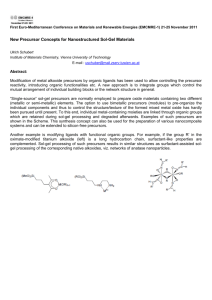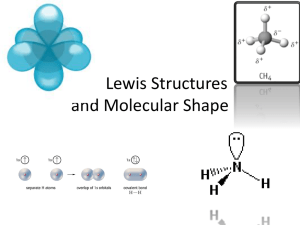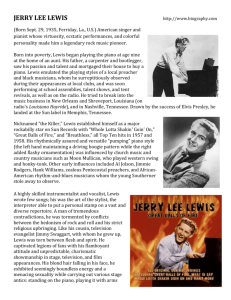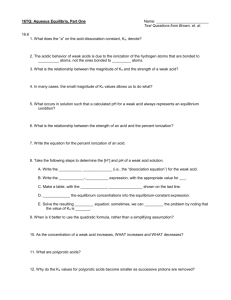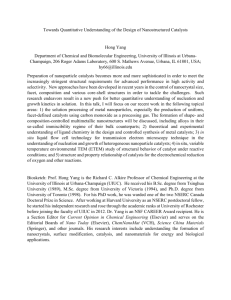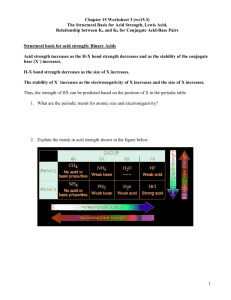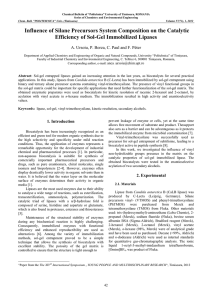Test de saisie
advertisement
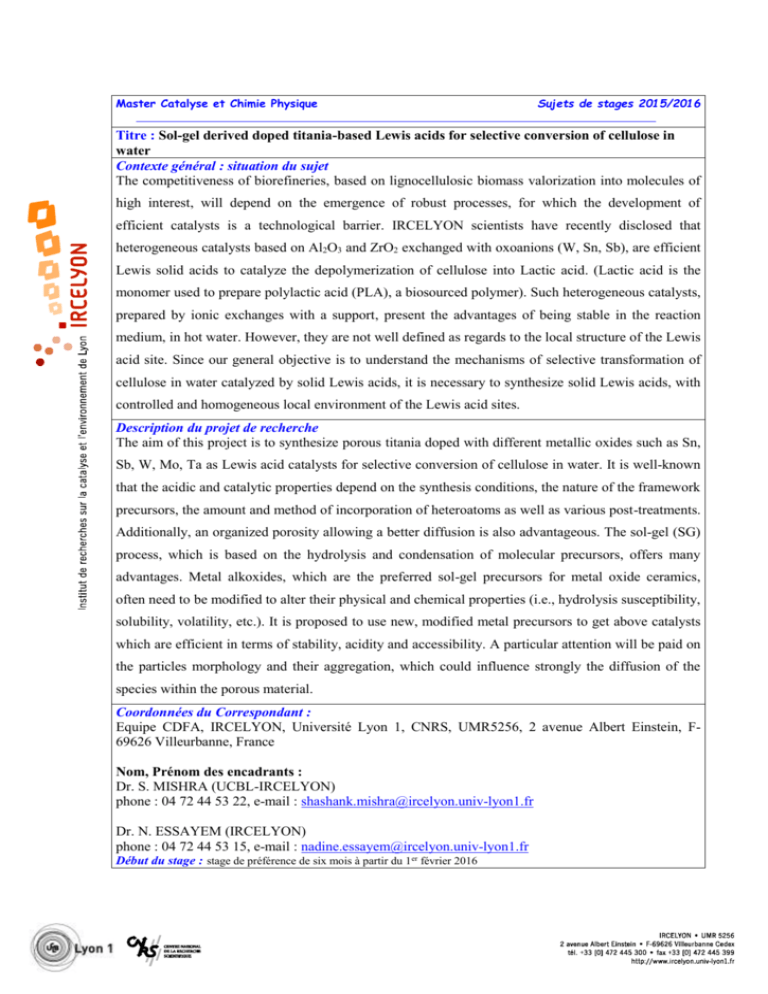
Master Catalyse et Chimie Physique Sujets de stages 2015/2016 Titre : Sol-gel derived doped titania-based Lewis acids for selective conversion of cellulose in water Contexte général : situation du sujet The competitiveness of biorefineries, based on lignocellulosic biomass valorization into molecules of high interest, will depend on the emergence of robust processes, for which the development of efficient catalysts is a technological barrier. IRCELYON scientists have recently disclosed that heterogeneous catalysts based on Al2O3 and ZrO2 exchanged with oxoanions (W, Sn, Sb), are efficient Lewis solid acids to catalyze the depolymerization of cellulose into Lactic acid. (Lactic acid is the monomer used to prepare polylactic acid (PLA), a biosourced polymer). Such heterogeneous catalysts, prepared by ionic exchanges with a support, present the advantages of being stable in the reaction medium, in hot water. However, they are not well defined as regards to the local structure of the Lewis acid site. Since our general objective is to understand the mechanisms of selective transformation of cellulose in water catalyzed by solid Lewis acids, it is necessary to synthesize solid Lewis acids, with controlled and homogeneous local environment of the Lewis acid sites. Description du projet de recherche The aim of this project is to synthesize porous titania doped with different metallic oxides such as Sn, Sb, W, Mo, Ta as Lewis acid catalysts for selective conversion of cellulose in water. It is well-known that the acidic and catalytic properties depend on the synthesis conditions, the nature of the framework precursors, the amount and method of incorporation of heteroatoms as well as various post-treatments. Additionally, an organized porosity allowing a better diffusion is also advantageous. The sol-gel (SG) process, which is based on the hydrolysis and condensation of molecular precursors, offers many advantages. Metal alkoxides, which are the preferred sol-gel precursors for metal oxide ceramics, often need to be modified to alter their physical and chemical properties (i.e., hydrolysis susceptibility, solubility, volatility, etc.). It is proposed to use new, modified metal precursors to get above catalysts which are efficient in terms of stability, acidity and accessibility. A particular attention will be paid on the particles morphology and their aggregation, which could influence strongly the diffusion of the species within the porous material. Coordonnées du Correspondant : Equipe CDFA, IRCELYON, Université Lyon 1, CNRS, UMR5256, 2 avenue Albert Einstein, F69626 Villeurbanne, France Nom, Prénom des encadrants : Dr. S. MISHRA (UCBL-IRCELYON) phone : 04 72 44 53 22, e-mail : shashank.mishra@ircelyon.univ-lyon1.fr Dr. N. ESSAYEM (IRCELYON) phone : 04 72 44 53 15, e-mail : nadine.essayem@ircelyon.univ-lyon1.fr Début du stage : stage de préférence de six mois à partir du 1er février 2016

